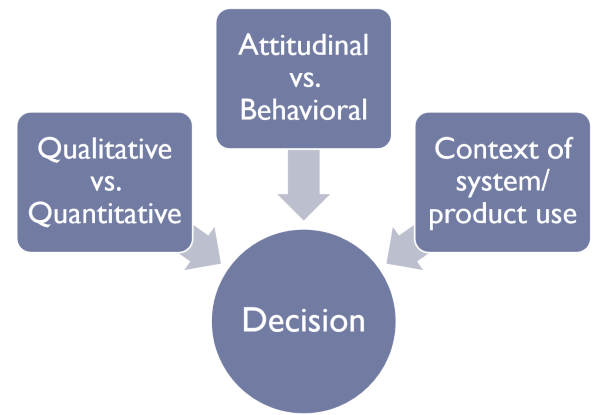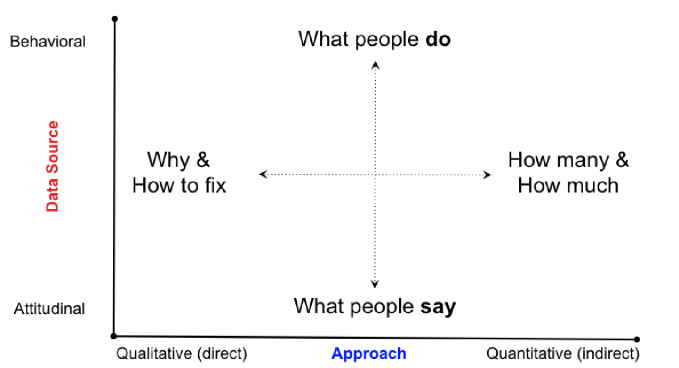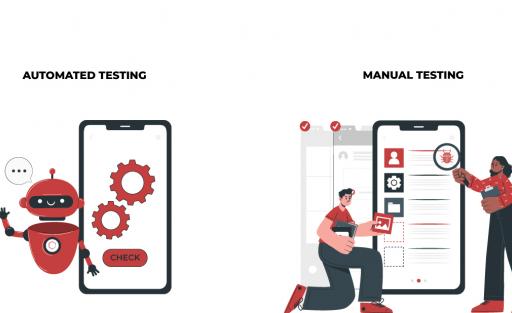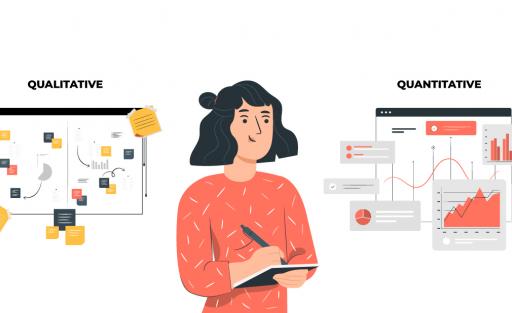From Usability to UX: A shift to hedonic aspects of interaction (part two)

Following "From Usability to UX: A shift to hedonic aspects of interaction – Part One" this article briefly presents the very basic considerations we have to go through as we are moving from the concept of Usability to User Experience. In the first part we discussed the main challenges for this transition and we presented four key related parameters that every UX professional should consider:
- What Dimensions of Experience Are Studied?
- How do we measure UX?
- When to use which UX evaluation method?
- What about the time dimension?
The first two were presented in Part One. In this article we present (3) and (4).
When to use which UX evaluation method?
This is a crucial consideration and decision that should be made. Such a decision can be based on the following three pillars [1]:

First we should take into account the “Qualitative vs Quantitative” dimension. If our investigation focuses on the “why” or “how to fix a problem” then qualitative approach is the most effective. If the problem we tackle requires a focus on “how many and how much” type of questions, then we must choose a quantitative method. Until recently only few studies combined qualitative and quantitative methods. It seems that this has started to change. Mixed methods research is gaining momentum as an approach because practically it provides effective solutions to complex research questions and business problems.
In parallel we need to think the “Attitudinal vs. Behavioral”. The attitudinal dimension is about understanding and measuring people's stated beliefs, i.e. what they say (we collect such data through self-reported methods such as surveys, interviews, diaries, etc.). On the other hand, behavioral dimension is about understanding "what people do" which is usually performed with minimal interference from the method itself (for instance we collect these data through methods like A/B testing, observation and video recording, first click testing, eyetracking, etc.). Christian Rohrer [1] describes it with a clear diagram:

image credit: https://www.nngroup.com/articles/which-ux-research-methods/
The Context of Use Dimension
This dimension can be further described along the following situations:
- Natural or near-natural use of the product, for example we are out on the street and need a taxi and we use our smart phone to call a taxi or use a relevant mobile app.
- Scripted use of the product, for example when we participate in a usability study and there is a specific protocol and guidelines for using a product.
- Not using the product during the study, as for example in retrospective UX studies where participants try to recall and reconstruct memories and experiences from using a product.
- A combination of the above.
What about the time dimension?
Many of us tend to think that we experience something at the moment we interact with it. However experience is something which goes far beyond. Actually user experience occurs before, during, and after interaction with products and that is why UX is a dynamic phenomenon as it changes over time.
As Bargas-Avila and Hornbaek [2] found, the studies and measures of UX “before interaction” are rare (20%), while “after measurements” are the most frequent (70%). “Before interaction” may sound a bit peculiar but it is associated with anticipated UX which is extremely important because UX is strongly influenced by prior experiences and expectations based on those experiences. On the other hand, “after measurements” refer mostly to the episodic UX which is about the evaluation of a specific usage episode reflecting on an experience but not in the long term. It seems that so far we tend to neglect the “before” and the long term evaluations for several reasons. We strongly believe this has to stop; both anticipated UX and long term UX evaluations help us to better understand users’ emotions, expectations and motivations. To this end, we cannot afford losing the perspectives across the whole time-span of experience.
Happy reading and keep on UXing!
References
[1] Rohrer, C. When to Use Which User-Experience Research Methods (2014). Available at: https://www.nngroup.com/articles/which-ux-research-methods/
[2] Bargas-Avila, Javier & Hornbæk, Kasper. (2012). Foci and blind spots in user experience research. Interactions. 16. 24-27. Available at: https://dl.acm.o





